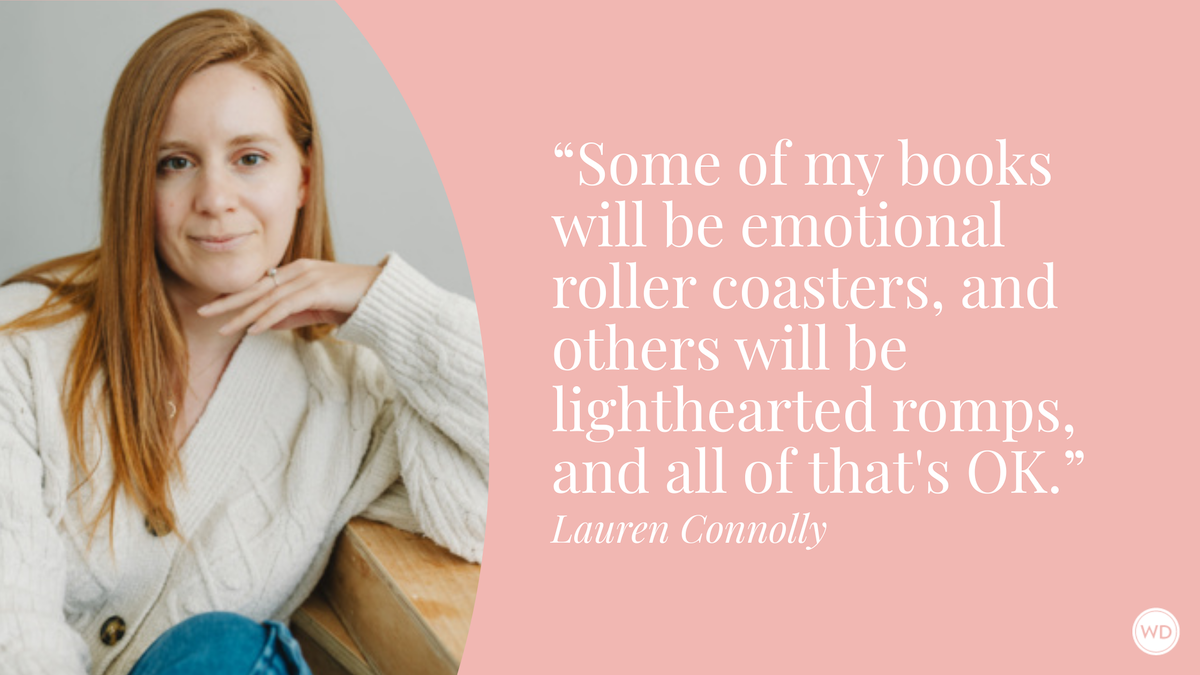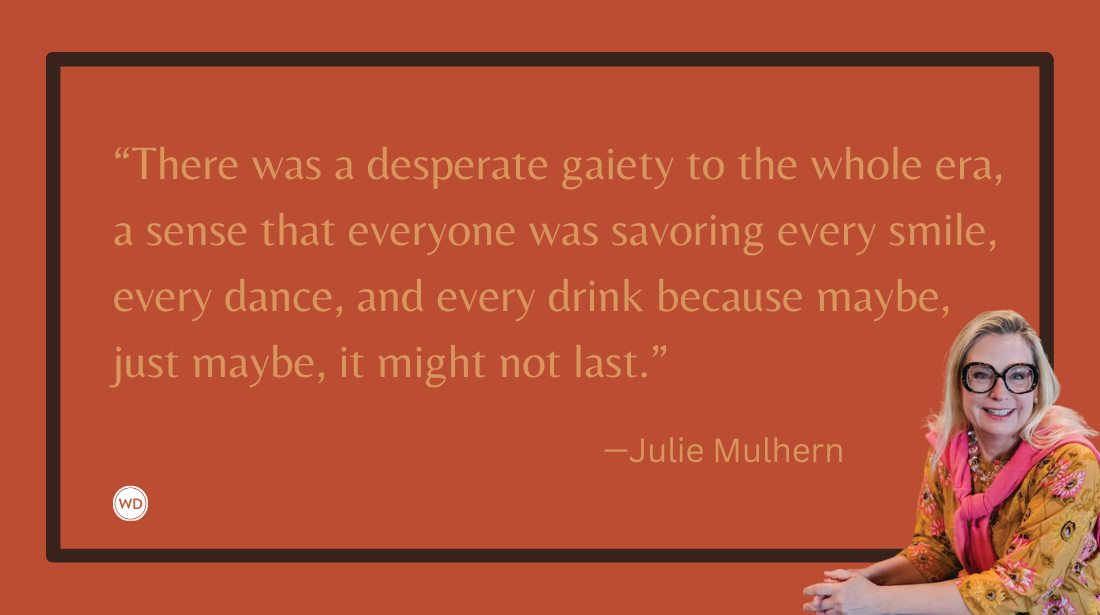7 Tips for Starting To Write a Short Story
Award-winning author May-lee Chai shares tips on how to begin writing short stories through personal experiences and writing prompts.
I love short stories! I love reading them, I love writing them, I love working on them. It’s a form that has so many possibilities. As a reader, whereas a novel requires a deep commitment of time and mental energy, with short stories, I can drop into the world of the story, be immersed, and then emerge, again and again, all in a single collection.
When writing short stories, I find inspiration can come from many places. Here are a few tips for getting started.
1. Stories Inspired by the News
I began my career as a reporter for The Associated Press, where by design I had to write a lot of spot news, meaning crime reports, accident reports, weather catastrophes, etc., in only 500 to 750 words each. This type of writing begins and ends with the five Ws: who, what, where, when, and why. What I found disappointing about writing spot news reports is that they cannot go deeply into the “why.” We don’t know the person, only the crime.
However, a short story allows us to see what motivates someone at a much deeper level, what leads a person to a place they never expected to be, either committing a crime or being caught. In several of my short stories I start with a crime, as in the title story of my new collection Tomorrow in Shanghai, in which a man convicted of crime is executed, but then the story goes more deeply into the societal and personal factors that led to this act.
Prompt: Look in your local paper for a few short articles about crimes. Keep a file over time. Then create a character who is definitely not the person in the actual crime story, but someone you can empathize with deeply, and imagine what series of events/decisions would lead this character to be involved in this crime. See where the character takes you.
2. The Holiday Event
High emotional expectations for a holiday get-together can mean greater chances for disappointment, conflict, even fights. While they can be painful in real life, these events are great seeds for stories. In one of my stories, “Hong’s Mother,” I start with a daughter who feels alienated from her mother. Then the story moves toward the Holiday Event that ends up symbolizing both what separates them and what weird thing they alone shared as mother and daughter, something that no one else in the family can understand or even know about.
In classes, I’ve recommended Anthony Veasna So’s story “We Would’ve Been Princes” from Afterparties as a prompt for students, as it uses the way cousins party after a wedding to unpack a Cambodian American family’s journey through war and refugeeism to California. It’s simultaneously profound and very, very funny.
Prompt: Think of the cheesiest expressions of good cheer for a holiday, whether greeting cards, holiday ads, or commercials, etc. Keep a file of inane good wishes. Recall one (or more) holidays that did not live up to your expectations and how it went awry. You can also ask friends for their Bad Holiday Memories. Then create a situation where a character who absolutely does not want to go to this holiday event ends up going. Describe how he/she/they anticipate feeling. Then describe the event and see if you can subvert those expectations while still being true to your character.
3. Experiment With Form
I’ve often used National Book Award-winning author Charles Yu’s first short story collection Third Class Superhero in my writing classes to inspire students because in addition to being witty and moving, the stories are written in so many different forms, including multiple-choice quizzes, screenplays, a game, lists, even literary analysis.
Prompt: Write a to-do list for a character. Is the list seemingly mundane like a shopping list? Or is it like a bucket list of hopes and aspirations? Why is the character making this list? What obstacles will make it difficult to finish the list? Does the first list end up generating more lists as the character moves through the day or through life?
4. Start With Action
Beginning in medias res can be useful because you have to think of a reason for the event to be happening. It gives you a dramatic beginning, and then unpacking that event can lead you into the deeper meaning. For example, in my story “Jia” I begin with a mother declaring that she is leaving. We see the scene of flight from the daughter’s perspective, and ultimately the story becomes about the different dreams of the family members colliding rather than the act of leaving itself.
5. Play With Time
Think of a dilemma for a character, perhaps something you or a family member has had to deal with, then set the story 100 years in the future or 50 years in the past. Then the story can explore how the time period impacts the character’s options for dealing with the dilemma. I do this in several stories in my collection, including “The Nanny,” which is set on a Chinese colony on Mars.
Other contemporary works that I like that go back and forth in time are Sequoia Nagamatsu’s novel How High We Go in the Dark, which uses linked stories in different time periods to explore a pandemic and environmental catastrophe, and Gish Jen’s Thank You, Mr. Nixon, which shows different members of a Chinese family over time.
IndieBound | Bookshop | Amazon
[WD uses affiliate links.]
6. A Stranger Comes to Town
One of the most common story archetypes is a stranger moving into a new place and causing a stir, anxiety, even violence among the locals. In my story “Jia,” an interracial family moves to a mostly monoracial white town in the early 1980s and the white neighbors react with hostility.
Prompt: Start from the point of view of “the stranger.” What about the character makes this person feel like an outsider? Is it race, national origins, appearance, socio-economic class, something else? Why do the people in this location see the character as an outsider? Do they treat all people from different backgrounds like this or just this particular character? This prompt can allow the writer to explore social issues of immigration, refugeeism, colonialism, economic insecurity, and xenophobia.
7. Read Short Stories
My greatest inspiration comes from reading other short stories! One way to prime the pump is to read a passage from a short story that you really love. Allow yourself to be immersed in the sensory details, relish the word choices, thrill to the author’s unexpected choices. Then while you’re still in the story’s spell, start writing your own story.
May-lee Chai is the author of the American Book Award–winning story collection Useful Phrases for Immigrants and 10 other books. Her prize-winning short prose has been published widely, including in the New England Review, Missouri Review, Seventeen, The Rumpus, ZYZZYVA, the Los Angeles Times, Dallas Morning News, and the San Francisco Chronicle. The recipient of an NEA fellowship in prose, Chai is an associate professor in the Creative Writing Department at San Francisco State University.









